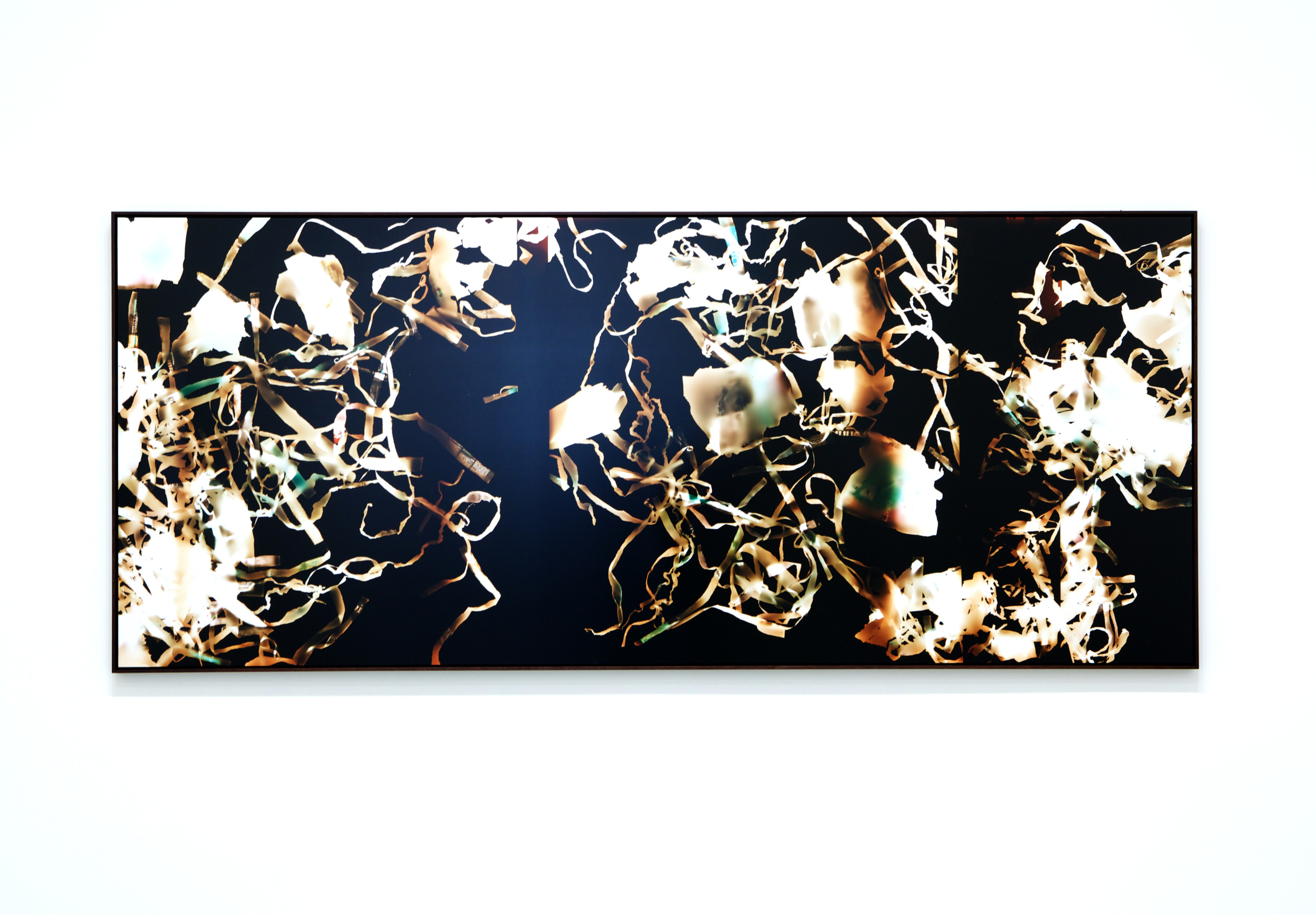Marianne Hurum
Born 1978, Oslo. Lives and works in Oslo.
Marianne Hurum’s artistic practice can be described as ‘painting in the expanded field’, meaning in part that the painterly surface extends beyond the two-dimensional plane and into the room. Art historian Rosalind Krauss, in her seminal essay ‘Sculpture in the Expanded Field’ (1979), discusses how artists develop painting’s potential by incorporating into it everyday objects such as photographs, also by using serial techniques, new paint surfaces and industrial paint. Such strategies result in deconstructing painting in the traditional sense. The interest in painterly experimentation has set the tone for several of Hurum’s projects. One example is how she explored the wooden stretcher-frame on which a piece of canvas is traditionally mounted. She presented her results in the exhibition Stretchers, which was organized as part of the artist-studio project ‘W17’ at Kunstnernes Hus in 2012. In other works, she has taken recourse in everyday materials, developing them further through painterly treatment in her studio.
In the exhibition NN-A NN-A NN-A, Hurum is presented by a work from her series “Borders and Shading, Alignment and Spacing” which consists of experimental photograms. The title refers to functions in the Microsoft text-processing program ‘Word’, but since the clause is removed from its original context, it almost seems like a line from a poem – and at the same time a description of the formal composition of a visual expression. In the 20th Century, the photogram medium was explored by several avant-garde artists, one exponent being Man Ray (1890-1976), who began making rayographs in the 1920s. The German artist Christian Schad (1894-1982) also explored this technique, placing dog-eared bits of paper and rags on light-sensitive paper, then exposing the compositions to light. Schad’s photograms have an abstract expression as well as a direct link to ‘reality’, given how their surfaces index mundane objects. Hurum also uses such objects, for instance crumpled and ripped newspaper, to create the forms we see on the picture. The photogram process is marked by experimentation and randomness because Hurum has placed the bits of newspaper on photographic paper by hand whilst in the darkroom. Two of the few visual aspects she was able to control were the format and colour temperature. The result is an abstract picture that leads our thoughts to modernistic precursors from the Abstract Expressionist movement. The format, expressive gesture and activity of composing the photogram call to mind paintings by Jackson Pollock, for instance One: Number 31 (1950).
But Hurum’s work is not solely an abstract picture created through expressive gestures and formal research. Its meaningful content stems from the decision to use newspapers as artistic material in the photogram process. She used pages from the Norwegian papersKlassekampen (‘the class struggle’) and Dagens Næringsliv (‘today’s business life’), which can in many ways represent antithetical political orientations. Newspaper media per se can signify mass-communication’s exercise of power over the individual, through its wide distribution and status as mediator of ‘truth’. Hurum has an expressed engagement in socio-political life, and a belief in visual art forms as conveying something sincere. Her photogram can be seen as a means for arresting the constant stream of newspeak through an artistic gesture, and as an attempt to express something political through a painterly process that treats newspaper fragments as paintbrushes. The result is nevertheless abstract: it can point to the antagonistic relation between the socio-political ambitions in early modernistic avant-garde art, but also to the challenge of trying to express political content in an abstract picture today. For Hurum, the photogram medium functions as an ‘extreme painting’ – the composition of a photogram can only occur ‘there and then’, in the darkroom. A conventional painting, by contrast, can be painted in several layers over a long period of time. The photogram process has a clear cut-of point, freezing the continuous stream of news into pure abstraction.
Text by: Ida Sannes Hansen


